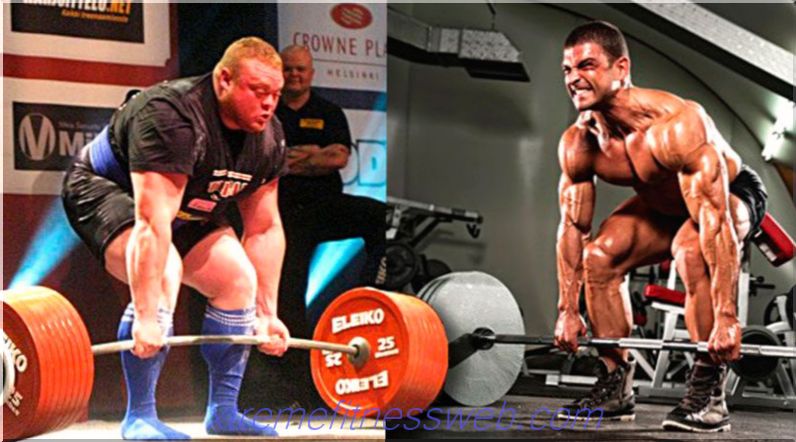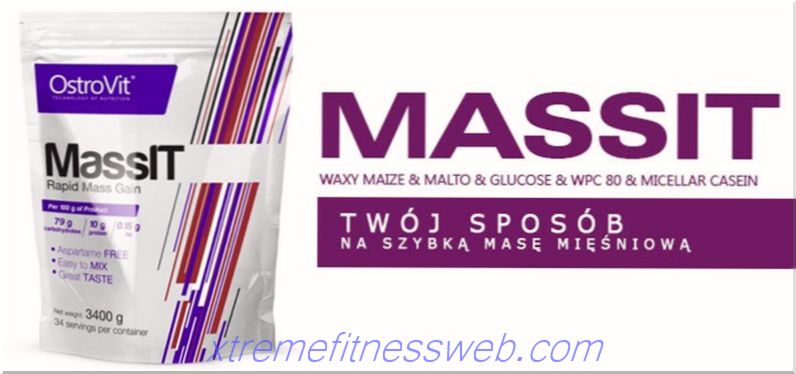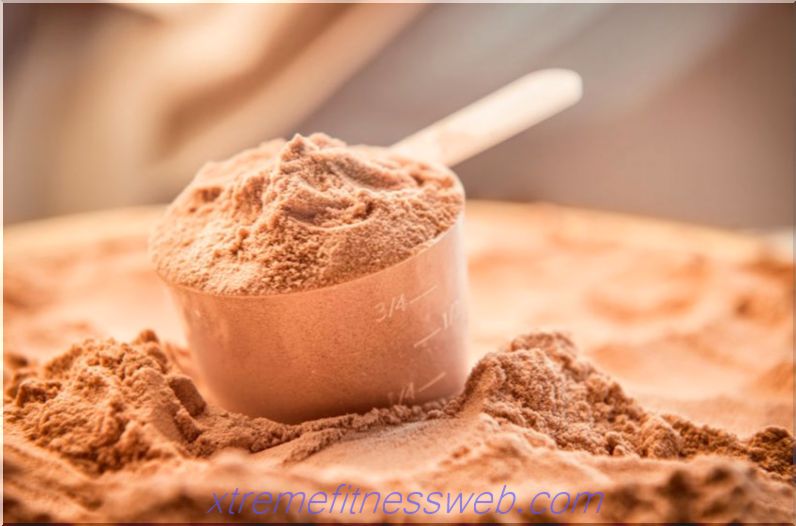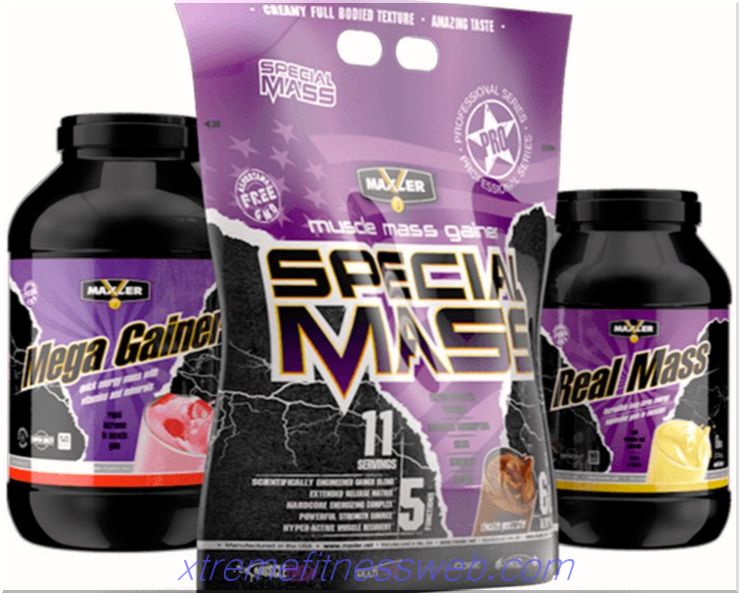- Chemical structure
- How creatine affects the body
- Drying Creatine
- Creatine in Food
- Side effects
- How to take creatine
- Top Creatine Phosphate Supplements
- Total

Many sports nutritional supplements do not contain something indispensable. So is creatine. This supplement has proven effectiveness, but it may well be synthesized in the body. We obtain creatine phosphate from amino acids, that is, with a sufficient amount of protein food. If there is a protein deficiency, the supplement will solve the problem of insufficient creatine. The general purpose of its application is to increase strength indicators and the return on training. Creatine is drunk in bodybuilding, crossfit, powerlifting and regular amateur fitness. It is suitable for men and women, and can be used in adolescence. This supplement is without side effects for a healthy person. But many trainers believe that its use is not necessary. Why is this happening ">
Content
- 1 Chemical structure
- 2 Why creatine should be taken separately
- 3 How creatine affects the body
- 4 Creatine in sports
- 4.1 Performance enhancement
- 4.2 "Filling" with water
- 4.3 Muscle Growth
- 4.4 Creatine and Rollback
- 4.5 Creatine and bone density
- 5 Creatine on the dryer
- 6 Creatine in Food
- 7 Adverse Effects
- 8 How to take creatine
- 9 Top Creatine Phosphate Supplements
- 9.1 Types of Additives
- 10 Summary
Chemical structure

Creatine Phosphate is a derivative of amino acids. It is erroneously called an amino acid, although from the point of view of chemistry it is a metabolite.
For the synthesis of creatine, our body uses:
- Methionine;
- Glycine;
- Arginine
That is, technically it’s quite simple to eat protein food, and the body itself will “make” the right portion of creatine to maintain the contractile activity of muscle fibers.
An interesting fact: foreign athletes massively prefer wild fish and farm beef. The reason is simple - about 20% more creatine and amino acids in the meat of trained animals. But poultry, veal produced in the usual way and fish from the farm are “weak” options for replenishing creatine reserves.
Why should we take creatine if you already have to eat large quantities of meat in order to remain strong and beautiful "> Why creatine should be taken separately

Unlike other derivatives of protein metabolism, creatine is difficult to obtain with food. Only a person who uses about 2 g of protein per 1 kg of body weight has a chance. Agree, there are not many of these among non-professional athletes. Therefore, even for normal fitness purposes, it makes sense to take creatine separately as an additional food supplement.
Creatine practically does not metabolize in the body, if taken as an additive. He goes straight to the muscles, and there he stocks up. The average athlete can stock up to 450 g of creatine phosphate per month. How much is needed for active training ">
How creatine affects the body

Is creatine necessary for normal functioning of the body?> Creatine in sports

Creatine supplements are popular in strength sports. Indeed, this is a godsend for a bodybuilder who likes bulk muscles and just wants to look big. There is an opinion among builders that creatine can be consumed constantly on a mass basis, and at the very beginning of drying, too, to maintain the rate of metabolic reactions.
But athletes who need to stay within the weight category do not really like creatine. From practice it is known that with the help of creatine supplements you can gain 2-3 kg of weight. Again, after the withdrawal of creatine, this weight quickly “merges”, but many do not like the idea of recruitment, so they are against creatine supplements.
In strength sports and bodybuilding, creatine helps:
- Rapid muscle pumping, this is especially evident when taken together with arginine;
- Mass growth;
- When combined with selective modulators of androgen receptors - acceleration of anabolic processes and a significant increase in power;
- When using "solo" - the growth of strength indicators at the time of admission;
- Overcoming the “power plateau”;
- Accelerate metabolism due to a set of muscle mass;
- Increase the efficiency of the heart;
- Glycogen binding and more efficient muscle function;
Performance enhancement

You can find information that creatine increases productivity by 35%, which contributes to both strength and stamina. Moreover, the effects of creatine are not directly anabolic and therefore do not affect the hormonal system of an athlete.
It works indirectly. Creatine retains water, and muscles build up faster. This requires a greater consumption of oxygen, improves blood circulation and muscle nutrition. As a result, a person breaks a power plateau. It turns out that the effect of pumping helps to overcome the power plateau, and the plateau in endurance due to creatine.
Muscle pumping alone contributes to:
- Increase oxygen supply;
- Glycogen retention
Creatine, therefore, contributes indirectly to increasing strength endurance. The normal effect of taking it is that the athlete learns in multi-repetitive mode to overcome heavy loads. So, working weights can increase from 50% to 60-70 from 1 PM in basic exercises. This over time leads to an increase in the athlete’s fitness and his strength indicators.
Conclusion: creatine does not affect the human hormonal system. It is not a selective modulator of androgen receptors. It simply contributes to the retention of glycogen and water in the muscles, which mechanically increases their performance. Creatine helps to become stronger and more enduring, but all this happens with an increase in the athlete’s own weight.
"Fill" with water

Many bodybuilders specifically drink salty mineral water and increase the salt content in the diet during the off-season. This should contribute to greater stamina and strength, and serve as a means of preventing injuries. Creatine works in much the same way. His “mission” is to hold water. In the off-season, this may be promising in terms of injury prevention.
Important: “pouring with water” also improves the biomechanical characteristics of muscles, therefore it serves as a good way to prevent injuries sustained due to a violation of technology.
Filling can have side effects. It is a common cause of seizures, as an imbalance of mineral salts and water is created in the body. When performing difficult approaches in this state, the athlete should always use the help of the insurer. The problem with convulsions with the additional use of potassium and magnesium is solved, but this also leads to a certain decrease in the amount of water in the muscles.
Increasing the amount of fluid in the muscles is considered useful, but keep in mind that this point is not suitable for those who have problems with the health of the kidneys and high blood pressure.
Muscle growth

So, creatine starts the process of increasing the supply of muscle to the blood and oxygen. With adequate training loads, its use will also contribute to muscle growth. Creatine “builds up mass” only in the presence of all conditions for normal protein synthesis. The athlete should eat normally and recover. Otherwise, creatine will be a useless supplement. These are not anabolic steroids to correct the lack of regimen, lack of nutrition and too heavy, improperly selected training programs.
Schematically, the work of creatine can be represented as follows:
- When loading it in the muscles, fluid retention also occurs;
- Muscle pump leads to increased oxygen consumption, and accelerate blood circulation;
- Amino acids that are ingested are spent on muscle growth;
- Anabolic processes are supported by the partial resynthesis of creatine into amino acids;
- When building power indicators, this scheme works better
So, creatine really helps to recover faster and build muscle. And what about other sports indicators ">
Creatine and Rollback

This substance enjoys a well-deserved "dislike" of beginners who too early became acquainted with the phenomenon of rollback from creatine. What is it> Creatine and Bone Density
Athletes taking calcium and D3 can benefit from creatine intake. It serves as an indirect transport of these substances, which means that bones are also strengthened with its intake.
Bone density - a value that depends on the muscle mass of the athlete. If the muscles grow quite slowly, at a physiologically natural rate, as is the case with creatine, the athlete gets bone strengthening in addition to improving the quality of the body. This allows him to be more protected from injuries.
Taking creatine is therefore advisable in sports where there is a high level of shock and injury. There, he is adjusted for the off-season, in which the athlete is engaged in general physical training.
Drying Creatine

Some athletes practice taking creatine on a dryer. But this applies to those who have already spent several of her cycles, and has a fairly small percentage of fat. Such athletes do not need to significantly deplete glycogen reserves, and they remove carbohydrates significantly only in the last weeks of drying. Creatine helps them protect themselves from injuries, as in this case, high-intensity training is used on drying.
Most creatine on drying does not use. They immediately begin to practice a low-carb diet, and the combination of creatine with it is unproductive.
- Creatine retains glycogen in the muscles.
- On drying, the purpose of the diet is to deplete glycogen stores, so that the body begins to burn fat.
- Creatine slows down this process.
- The additive retains water. It’s impossible to evaluate the athlete’s physique. This leads to violations of the regime, errors and the use of not optimal nutrition and training plan.
- Creatine can contribute to the occurrence of seizures, as the water-salt balance during drying is impaired.
- In the final stages, the supplement may become the reason why “water does not drain”, as creatine retains water and the athlete, on the contrary, seeks to get rid of it.
But when losing weight in the weight category in power sports, creatine can be used. For example, an eyeliner for a competition lasts 4 weeks. 2 of them, the athlete follows a diet with a small calorie deficit and takes creatine. Before the start, the additive is removed, which gives "minus 2 kg" for weighing, and before the competition itself - a shock dose of creatine is taken to increase productivity. This weight loss scheme is fairly widespread.
Creatine in Food

26% of creatine phosphate contains ordinary herring. It can be considered a good source, but only with heat treatment its beneficial properties are reduced, and it turns out that the athlete receives even less creatine. In fact, without sports nutrition products, getting normal doses of creatine sufficient to solve the problems of building a body will not work. Therefore, it’s either worth recognizing that sports nutrition sometimes makes sense, or abandon the idea of “breaking through a plateau” along with creatine.
| Amount of creatine monohydrate in food (grams per kilogram of pure product) | ||
|---|---|---|
| Product | Creatine (g / kg) | Percentage of Daily Dose for Athlete |
| Herring | 8 | 26% |
| Pork | 5 | 16.5% |
| Beef | 4.5 | fifteen% |
| Salmon | 4.5 | fifteen% |
| Milk | 0.1 | 0.30% |
| Vegetables fruits | <0.01 | 0.01% |
| Nuts | <0.01 | 0.01% |
The creatine content in plant foods - fruits, vegetables and legumes - is so negligible that it can be neglected. At one time they liked to promote mushrooms as a source of creatine, but its digestible amount in them is negligible.
Indeed, for the sake of creatine you will have to eat 4 kg of herring. And if someone is capable of such a feat, then he should know that the fish will have to be chewed raw, since the cooked one will contain even less creatine. The conclusion suggests itself - either put up with sports nutrition, or use other means of building muscle mass and recovery.
Side effects

Creatine has been used in the sports nutrition market for over 30 years. During this time, no serious problems associated with its use were identified. From the first samples obtained back in 1996, to modern advanced forms of crecal alkaline, this is a relatively safe supplement.
However, discomfort during its use can still occur:
- The gastrointestinal tract may “rebel” during loading. This is due to a short-term local disturbance of the water-salt balance and tissue dehydration;
- Cramps due to electrolyte deficiency. They are easily prevented if electrolytes are consumed additionally;
- Swelling of the face;
- Increased stress on the kidneys during loading;
- Vitamin and Mineral Deficiency
You should not start taking creatine if you have kidney problems. Otherwise, it is a safe supplement. Side effects are closely related to the beneficial properties and mechanism of creatine, so getting rid of them completely will not work.
Taking creatine can affect heart health. If an athlete practices loading, or simply consumes quite a lot of creatine, his heart may experience increased stress. Lactate buffering helps increase heart rate and strength. This can lead to tachycardia, heart rhythm disturbances, and even muscle microtraumas.
Important: a fast-loading circuit affects the heart more. At high risk, it is sometimes recommended to simply refrain from loading creatine, and take it with an exceptionally smooth background.
How to take creatine

There are two options for taking creatine. You can drink it with a load, but you can - without it. Proponents of the first format believe that this way the supplement begins to work faster, and you can get the benefit from its use almost immediately. The second option is milder in terms of side effects, does not allow the body to retain too much water or suffer from excess creatine. But the athlete will feel the work of the supplement only after 2-3 weeks.
Download involves consuming 20 g of pure creatine per day. This indicator does not depend on the athlete’s own weight. Loading increases the consumption of a supplement quite a bit and can be too costly for some athletes.
Accepted in this case as follows:
- 10 g in the morning, immediately after 1 meal, with sweet juice;
- 2 hours before training - about 7 g;
- In the evening after dinner - the remaining 13 g
- In all cases, creatine is drunk with sweet juice or water.
As soon as the peak is reached, and this will become evident by the fullness of the muscles, and the tolerance of training, it will be possible to reduce the dosage to supportive ones. This is 5-6 g of creatine per day. The maximum duration of supplementation is 8 training weeks, then for a couple of days the dosage is reduced to 2-3 g, and after that creatine is completely turned off. How much to relax ">
Top Creatine Phosphate Supplements
Creatine can be found in the lines of all brands of sports nutrition:
- The optimum is newtric;
- Ultra;
- Biotech, Dimatize, others
Domestic manufacturers of sports food are not far behind, and each offers us its own options for creatine.
Types of Additives

Brands more or less cope with the task of supplying quality creatine. This supplement is difficult to spoil, so it makes sense to consider only types of creatine.
Creatine Monohydrate . It “loads” quickly, since you can consume up to 50 g of creatine per day. It is well absorbed by the body, does not contain any impurities and additives, and is convenient to use.
Creatine Phosphate . This is a cheaper supplement, lower bioavailability. Therefore, it is necessary to exceed the dosages recommended by the manufacturer by about a quarter, so that the body assimilates all the creatine provided.
Creatine with a transport system . An option for those who do not want to spend time searching for sweet juices, and drink a lot of tea. It is convenient to stir it and drink it before training to satisfy the body's need for creatine. Usually, creatine with transport is the most expensive, so they take the usual one for loading, and this one is just drunk before training, in order to reduce the time spent on supplementation.
Creatine Hydrochloride . This is an innovative product of Biotech, it is designed to give all the benefits of creatine, but not to flood the body with water. Designed for those who want to keep a “dry” and fit look. In fact, creatine hydrochloride does not have any proven advantages over monohydrate, so whether to buy it or not, you should decide for yourself.
An interesting fact : often creatine is added to industrial production gainers. There are special products with caffeine, carnitine and creatine in the composition. They are designed to help in the growth of muscle mass for those who have problems with weight gain. Creatine helps to delay glycogen and water in the muscles, its use helps to quickly gain weight. But you just have to stop taking the gainer, and the "water" will merge.
The same goes for pre-workout mixtures with amylopectin, creatine, and caffeine. They allow you to work out the training more efficiently, work like a soft pre-workout complex, increase energy and concentration, promote fluid retention in tissues, but at the end of their intake, a “rollback” is inevitable.
All types of creatine have approximately the same effect in terms of physiology. There is no creatine that can help you gain mass without a rollback, or otherwise allow you to save the results on their own. Если судить по отзывам, даже инновационные формы креатина все равно провоцируют «заливку» тела водой, что вполне естественно.
Total
Креатин давно на рынке и хорошо изучен. Он действительно помогает наращивать мышечную массу, и увеличивать рабочие веса. Эта добавка способствует восстановлению после силового тренинга, она помогает пробить «плато» в результатах, и прибавить как в объемах мышц, так и в массе. Креатин подходит большинству атлетов, он не содержит стимуляторов и не вызывает привыкания. Его используют во всех силовых видах спорта и иногда – в тренировках спринтеров и кроссфитеров. Достаточно выбрать качественный креатин, и построить свой тренировочный план так, чтобы активность была действительно направлена на увеличение мышечной массы.







